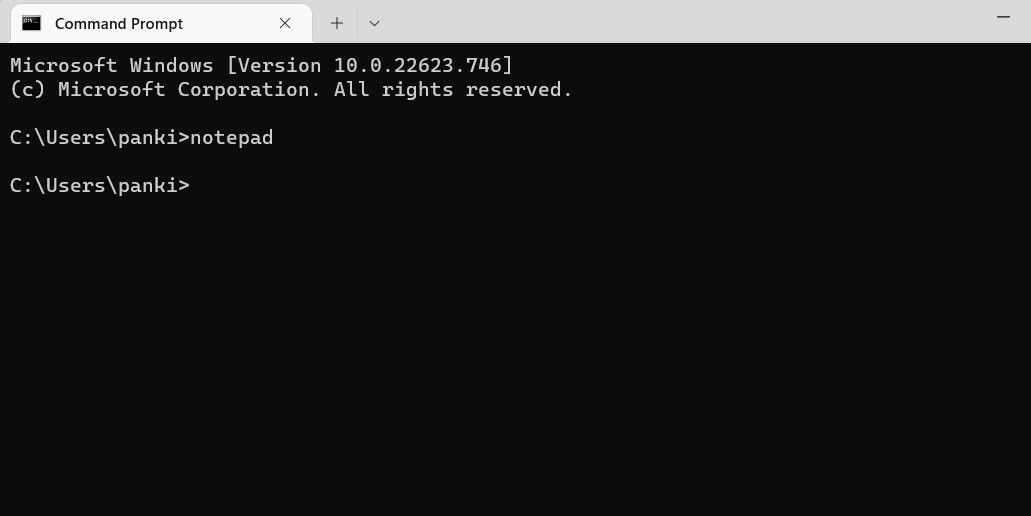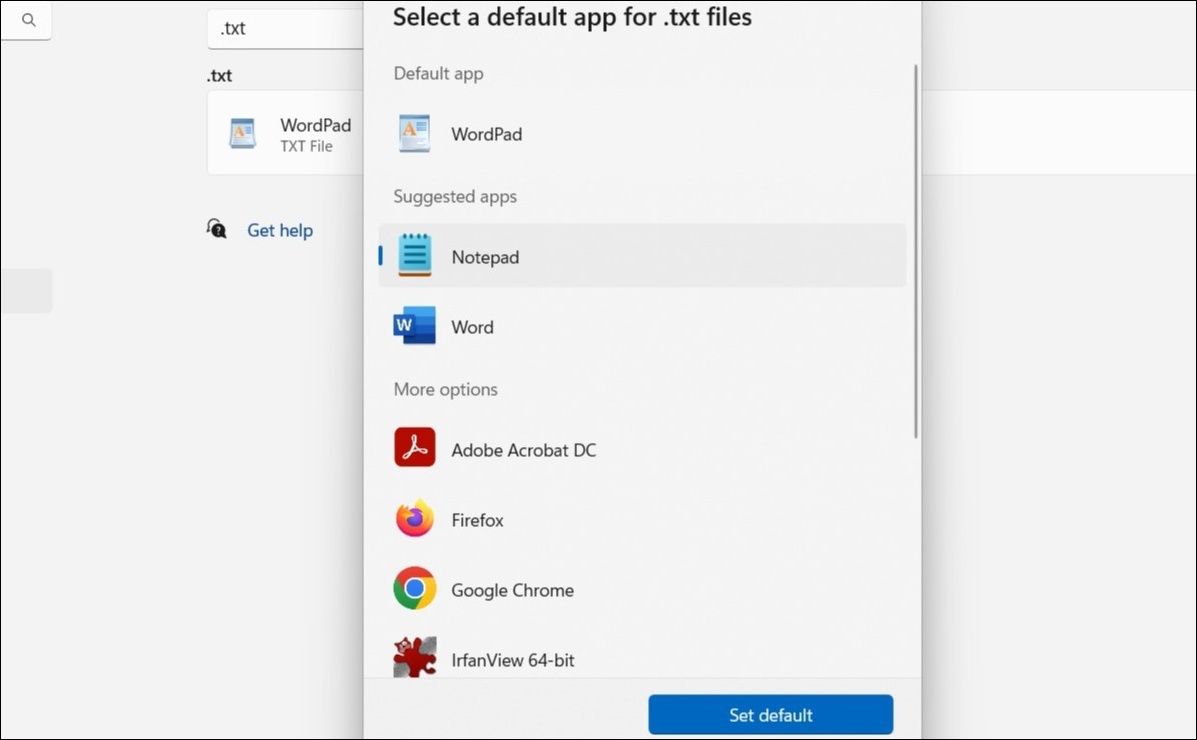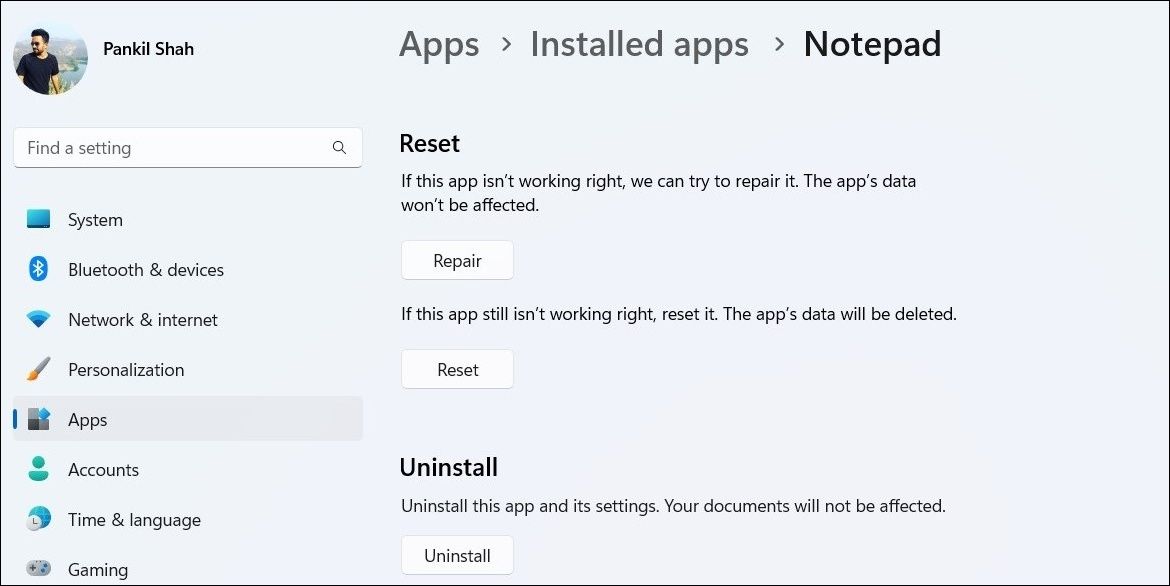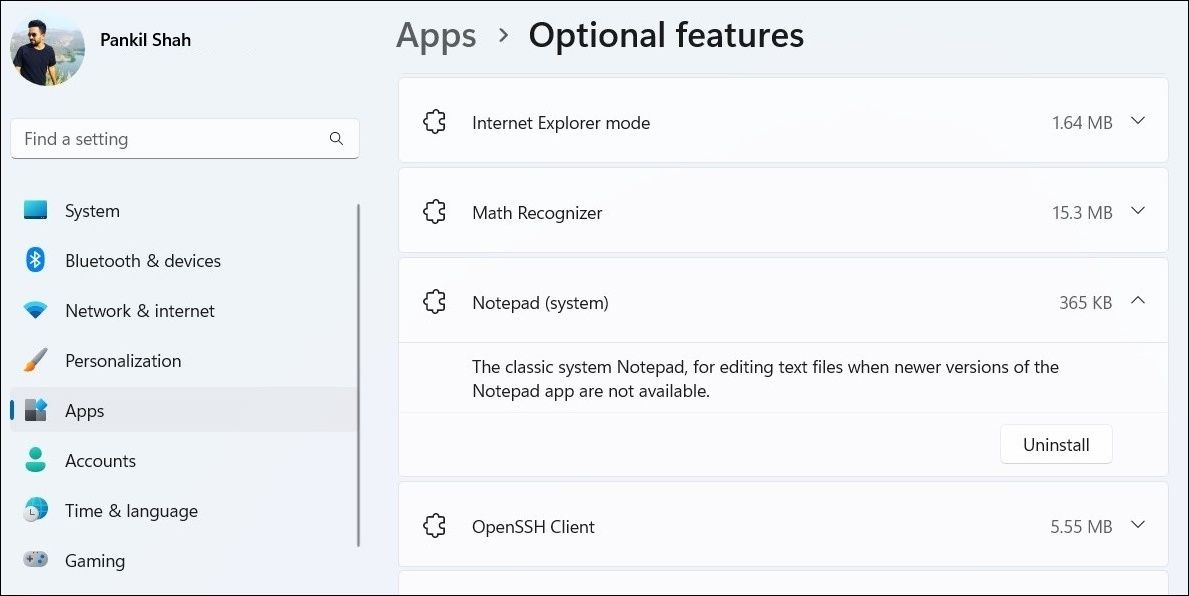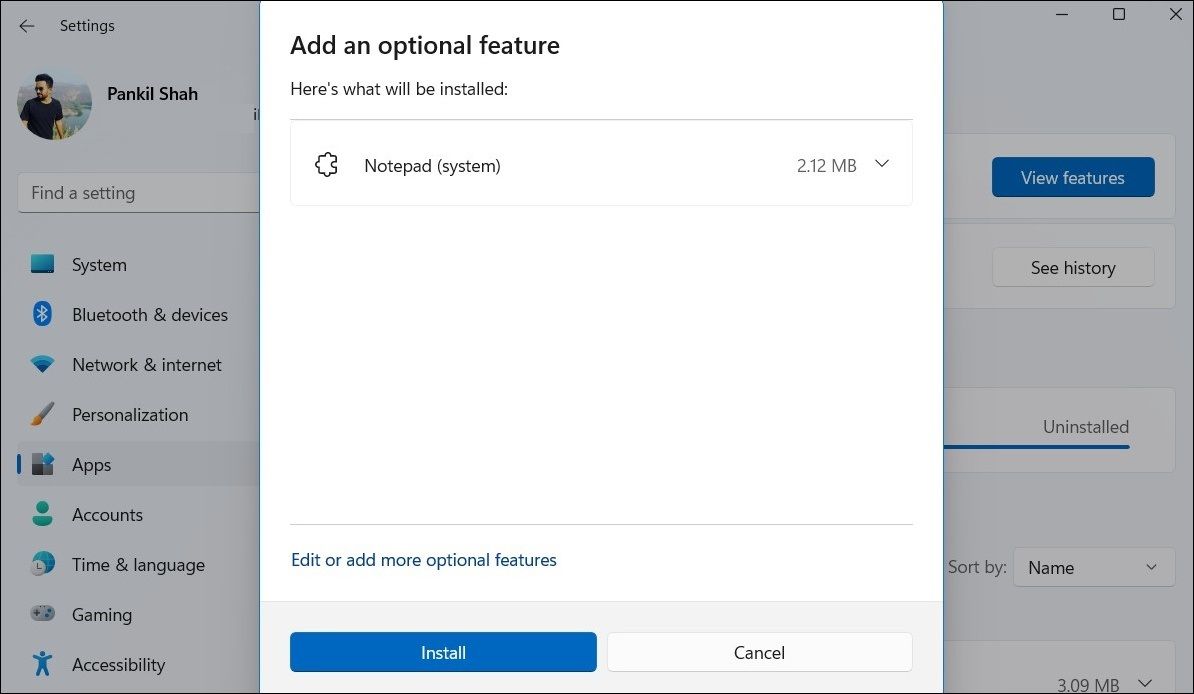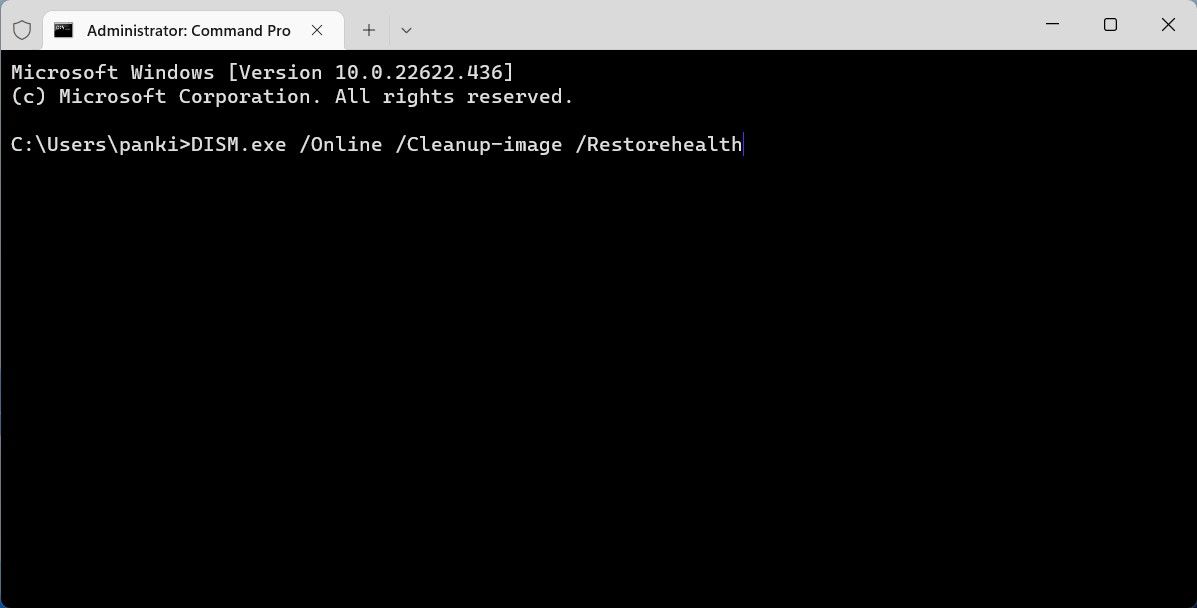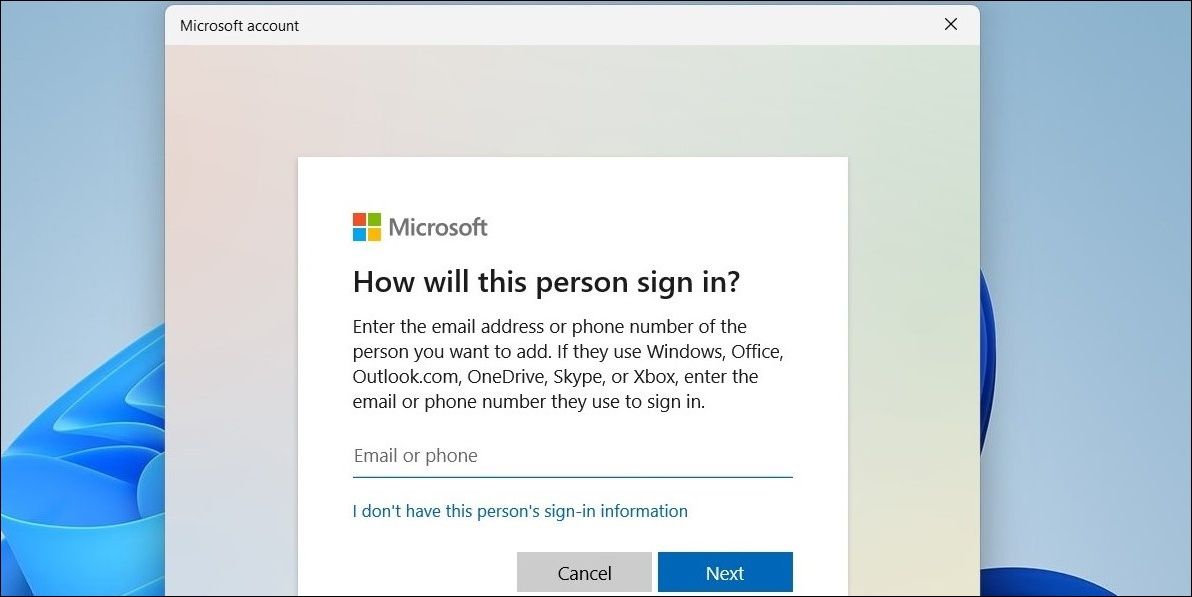Notepad is a simple text editor app that comes pre-installed on your Windows computer. You can use it to view, create, and edit text files whenever needed. But what if Windows fails to open Notepad and you can’t use it?
Several factors, ranging from a temporary app glitch to corrupt user account files, can prevent Notepad from opening on Windows. Fortunately, there are some quick fixes you can use to regain access to the Notepad app on Windows.
1. Use Alternative Methods to Open Notepad
Before you try any advanced solutions, see if you can open Notepad using the Run tool. Press Win + R to open the Run dialog box. Type notepad in the Open field and press Enter.
If that doesn’t work, try opening Notepad through a command-line tool. Open the search menu to launch Command Prompt or PowerShell. In the console, type notepad and then press Enter.
You could also ask Cortana to open Notepad. However, if none of these methods work, proceed to the next solution.
2. Set Notepad as the Default Text Editor
If Notepad is not set as the default text editor app on Windows, your text files may open in a different app. If you don't want that, use these steps to set Notepad as the default text editor app.
- Open the Start menu and click the gear icon to launch the Settings app.
- Navigate to the Apps tab.
- Select Default apps from the right pane.
- Scroll all the way down to the Related settings section.
- Click Choose defaults by file type.
- Type .txt in the search box and click the current default app.
-
Select Notepad and click the Set default button.
Try opening a few text files and see if they open in Notepad.
3. Repair or Reset the Notepad App
The built-in repair tool on Windows is quite efficient when it comes to fixing minor app-related issues. Microsoft recommends using this tool when an app fails to open or does not work as expected on your Windows computer.
To repair the Notepad app on Windows:
- Right-click the Start icon or press Win + X to open the Power User menu.
- Select Installed apps from the list.
- Scroll down or use the search tool to locate Notepad on the app list.
- Click the three-dot menu icon next to Notepad and select Advanced options.
-
Scroll down to the Reset section and click the Repair button.
You should see a checkmark next to the Repair button once the process is complete. Then, try to open the Notepad app again.
If repairing the Notepad app does not make any difference, you can try resetting it. Here are the steps for the same.
- Press Win + S to open the search menu.
- Type Notepad in the search box and select App settings.
- Under the Reset section, click the Reset button.
Windows will reset the Notepad app to its default version, which should resolve any issues with it.
4. Reinstall the Notepad App
You can also try uninstalling and reinstalling the Notepad app on your computer. To do so, you’ll need to access the optional features on Windows. Here’s how you can go about it.
- Press Win + I to launch the Settings app.
- Navigate to Apps > Optional features.
- Click on Notepad to expand it.
-
Click the Uninstall button.
- Wait for Windows to uninstall Notepad from your computer.
- Next, click the View features button at the top.
- Type Notepad in the search box.
- Tick the Notepad (system) checkbox and click Next.
-
Click Install.
Wait for Windows to install Notepad on your computer and then try to open it using the search menu.
5. Run the SFC and DISM Scans
Corrupted system files could also interfere with system processes and prevent Notepad from opening. The System File Checker (SFC) is a built-in utility that can help you repair system files on Windows. It basically scans your system for damaged system files and replaces them with their cached versions.
To run the SFC scan on Windows:
- Click the magnifying icon on the taskbar to open the search menu.
- Type command prompt in the box and select Run as administrator.
- When the User Account Control (UAC) prompt appears, select Yes to continue.
-
In the console, input the following command and press Enter:
sfc /scannow
Wait for the scan to complete and then enter the following command to run the DISM (or Deployment Image Servicing and Management) scan. It will try to detect and repair any issues with the system image.
DISM.exe /Online /Cleanup-image /Restorehealth
After the scan is complete, restart your PC and see if you can access Notepad.
6. Perform a Clean Boot
At times, third-party apps and background services can conflict with Windows processes and cause problems like the one discussed here. One way to verify this possibility is to boot your computer in a clean boot state, where it only runs with essential apps and services.
If you perform a clean boot and Notepad opens normally, it means that the culprit causing the issue got disabled. If you'd like to learn more about the topic, check out our guide on how to perform a clean boot on Windows and follow the steps listed there.
7. Create Another User Account
If some of the files in your user account have become corrupt, you may have difficulty performing simple tasks like opening an app. If that seems to be the case, your best option is to create and switch to a new user account.
To create a new user account on Windows:
- Use one of the many ways to open the Settings app.
- Navigate to Accounts > Other users.
- Click the Add account button.
-
In the Microsoft account window, click I don't have this person's sign-in information.
Follow the on-screen prompts to create a new user account. Make sure you give the new account administrative privileges so that you can move your personal files and data to the new account with ease.
Once you sign in with your newly created account, Notepad should open without problems.
Start Using Notepad Again
Hopefully, the solutions provided above have helped, and you’re able to use Notepad again. However, if none of the above solutions work, you can perform a system restore to undo any recent changes that may have caused the problem.


